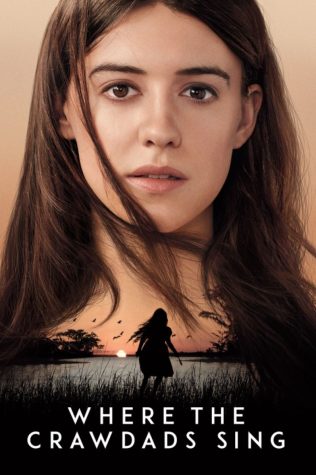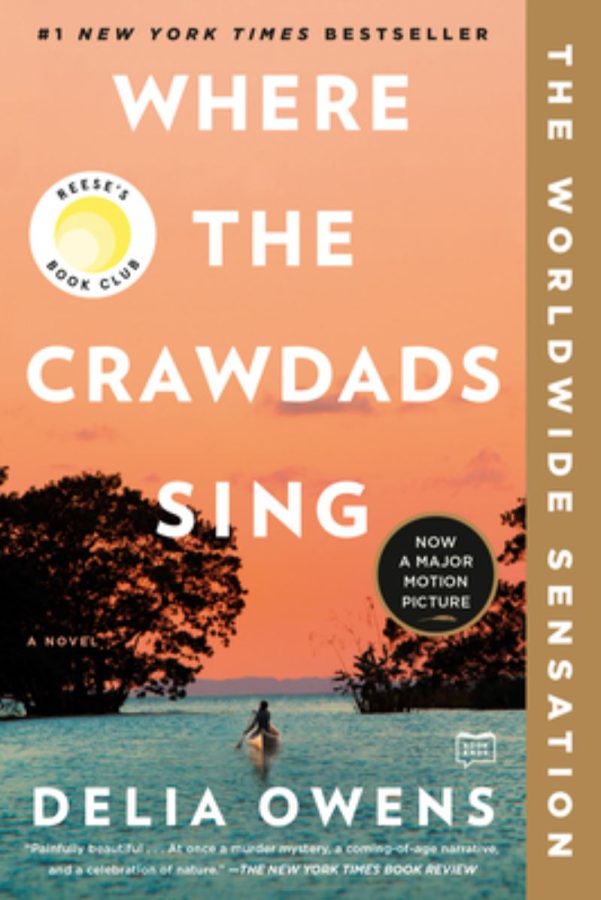“Where the Crawdads Sing”: to Read, or to Watch?
“Where the Crawdads Sing” by Delia Owens is a beautiful coming-of-age (or, if you want to impress your English teacher, bildungsroman) mystery novel following the life, work, and relationships of Kya, a young girl growing up alone in the marshes of North Carolina. Tensions and violence drive Kya’s family of seven apart, resulting in her being the sole occupant of her family’s shack, alienated by the townspeople nearby who refer to her only as “marsh girl.” So, when Kya is suspected to have murdered town favorite Chase Andrews, her few relationships become all the more impactful, and peoples’ perceptions of her become potentially life-threatening.
Although the characters aren’t the most multifaceted I’ve read, I appreciated that I didn’t have to keep track of dozens of them; it helped keep the story more focused. Some say that the novel is a little slow-paced, but personally, I couldn’t put it down and finished it in only a few hours, absorbed by the setting and the characters. Even if every character wasn’t fully fleshed out, standout characters like Kya’s lawyer were incredibly well written and came to life within the pages of the book. The plot has more plausibility and stability within the well-illustrated natural environment, which also makes the mystery within the novel immersive and easy to follow.
I will admit, Kya’s transformation is more than a little unrealistic — she goes from an abandoned child in the marshes to a published author and authority on the wildlife surrounding her. I didn’t mind, because this is a fiction novel, after all, and the slightly fantastical characters and stories fit in really well with the magical natural setting.
All in all, I highly recommend this book for its unique setting and beautifully written characters. And, let’s not forget the incredibly satisfying conclusion. I won’t give it away, so be sure to read the book yourself; it’s definitely worth it.
—Mia L. ’24

The movie version of “Where the Crawdads Sing” is wonderfully true to the original book, which automatically makes it good in my book — I will never say that the movie is better than its source material, but this one is certainly worth watching. The aesthetics are wonderful, as the marsh so vividly described in the book is brought to life in the movie. It’s easily one of the most vibrant natural settings I’ve ever read in a novel, so I had high expectations going into the movie. The wide open spaces filled with greenery and wildlife are beautiful and similar to what I had imagined from the book. Admittedly, long marsh scenes get boring fast, as they’re mostly just pretty scenery.
However, I was disappointed that the unfolding of the dramatic relationships of Kya and the townspeople doesn’t get the development it deserves. In the book, the author spends long chapters forming complex relationships between Kya, her family, and the town, but the movie doesn’t spend nearly as much time on the topic. It gives you a quick overview instead of extended development to move the plot forward faster.
In the movie, a small child miraculously manages to survive and stay oddly put-together while living in the middle of a marsh, which is unrealistic, to say the least. To be fair, that is how the book goes, so I can’t fault the movie. Still, her living situation and appearance seem far too nice to be the result of living in a shack with little to no education and resources.
Unfortunately, as this novel is a mystery, the ending will always be spoiled the second time around. I, of course, have to say the movie is meant to be watched second, simply because the book is the original and wonderfully entertaining on its own. I enjoyed this movie far more than I expected to because of how beautiful it was and how it remained true to the book. It cannot do the original justice, but it is worth watching nonetheless.
—Ria T. ’24

